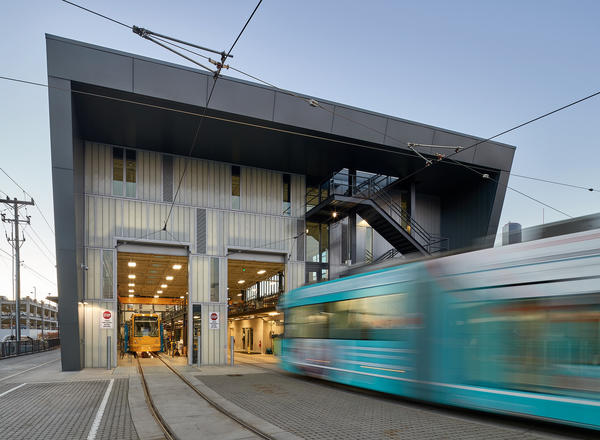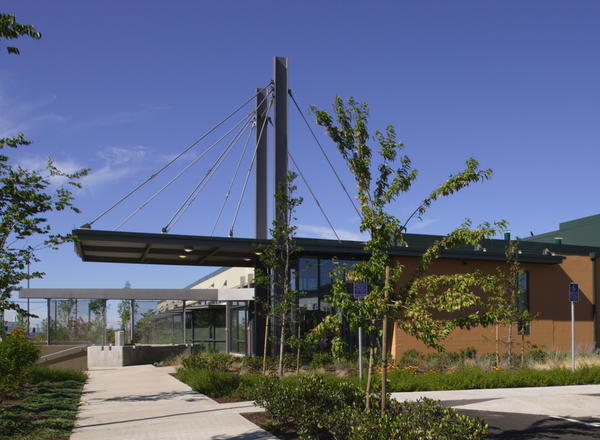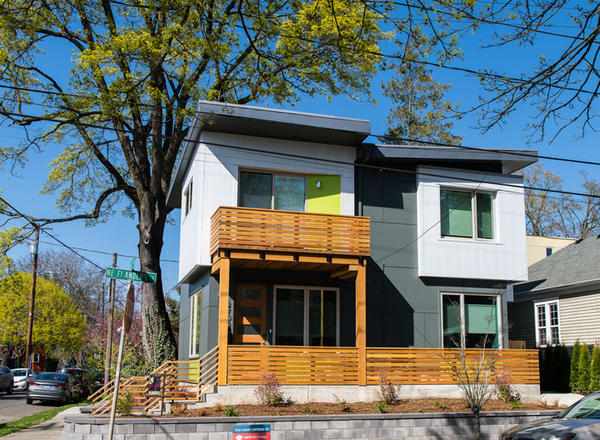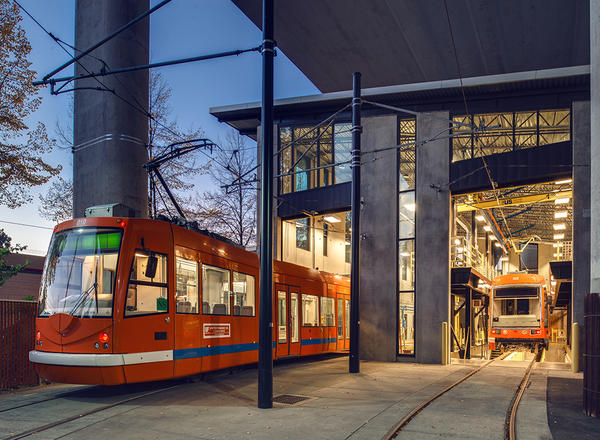sustainability
Driven by the individual passions of our staff, we weave sustainable measures and environmental best practices throughout all of our designs, whether or not a project plans to pursue formal LEED certification.
Waterleaf’s work in the Pacific Northwest complements the natural characteristics of the local climate and ecosystem. The incorporation of sustainable measures is one way we rate the success of our projects. Whether or not a project is to achieve formal LEED certification, we weave sustainability and an awareness of environmental stewardship throughout all of our designs.
Waterleaf has adopted the 2030 Challenge to work towards carbon neutrality, and we are proud to be a trade ally with the EnergyTrust of Oregon’s New Buildings program.
featured sustainable projects
Sustainability Action Plan
We understand that this world is in a climate crisis, and we are in a unique position to make a significant impact on our future. At Waterleaf, we believe it is our responsibility as architects and designers to lead the discussion between our clients and the project team to achieve the most effective sustainability objectives outlined for each project.
We see the 2030 Challenge as an opportunity to push our boundaries. By improving our sustainability goals and learning from the data we collect, we can determine how to best improve our projects. This plan acts as a guide to ensure that we are on track to meet the 2030 Challenge.
Our Process to achieve our 2030 goals
We engage our employees by creating our own sustainability focused events and activities. These include: recycling relay races, lunchtime webinars, and a sustainability book club. Our office sustainability group called the Greening Group meets every other month to discuss new opportunities, and track our progress towards a carbon-neutral office environment.
Another important aspect of sustainability is contributing to the community. We encourage our employees to volunteer for local events and organizations such as, the EcoNorthwest Green Building Slam and The Zero Energy Ready Oregon (ZERO) Coalition.
We hold ourselves accountable by maintaining a Gold rating with the City of Portland Sustainability at Work program and B-Corporation certification.
An Overview of Our Goals
- Integrate energy modeling into design process: Fully integrate energy modeling and sustainable design analysis into all new projects by the end of 2021.
- Report all projects to 2030 Challenge DDx: Report all new and currently active projects to the 2030 Challenge DDx by the end of 2020.
- Achieve carbon neutral office environment: Continue reducing our carbon footprint for office needs, such as printing, e-waste, travel, etc. until we achieve a carbon neutral office environment in 5 -10 years.
- All new projects are carbon neutral by 2030: Complete the challenge by designing all new buildings to be carbon neutral buildings by the year 2030.
integrating energy modeling and analysis
Steps:
- Create a workflow that allows designers to experiment with different building configurations and determine which one is most energy efficient while still meeting the project’s programmatic needs.
- Select a project to test the developed workflow.
- Evaluate effectiveness of modeling after the test project, and make adjustments to improve workflow outcomes.
- Educate, and train employees on how to create energy models. This includes training on how to interpret the data produced by the modeling program.
- Create a client presentation template to help communicate the advantages of different design schemes.
- Evaluate the energy modeling workflow after every project, focusing on feedback from design team members, and post-occupancy evaluations to improve the process.
- Use energy modeling tools to directly report to 2030 Challenge DDx.
2030 Challenge Reporting & Project tracking
- Develop a form for design team members to fill out at project startup, which includes basic 2030 Challenge data reporting points.
- Create data collection work flow with existing projects and present data collection work flow to office with explanations on process and timing.
- Begin collecting data on all new projects in the office
- Give time for feedback after each reporting cycle to encourage involvement, participation, and improve data collection procedures for the future.
Net-Zero Office Environment
Steps:
- Increase our knowledge of supplier practices through research and communication with suppliers
- Choose suppliers that produce environmentally responsible materials and goods.
- Use opportunities to improve our office environment with more energy saving systems, such as dimmers or occupancy sensors to reduce electrical loads.
- Find ways to recycle more of our office waste.
- Increase our carbon offsets.
All projects achieve 2030 challenge net-zero standards
The 2030 Challenge strives to reduce the amount of carbon in the atmosphere and aims to create healthier environments in which to live and work. We plan to do our part in preventing a catastrophic climate crisis by ensuring that all Waterleaf projects achieve the net-zero standards of the 2030 Challenge by the end of this decade.
Steps:
- Incorporate energy modeling on all projects
- Continue to educate staff on latest practices of sustainable design
- Work with clients to improve understand of sustainable design and ROI
- Increase collaboration with other disciplines to create most efficient design within project constraints
- Track and report project progress including post occupancy evaluations
- Review and learn from previous projects and decisions.





